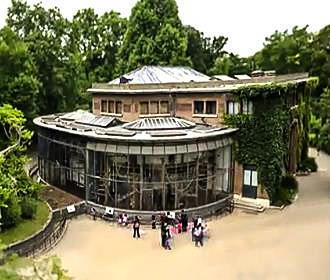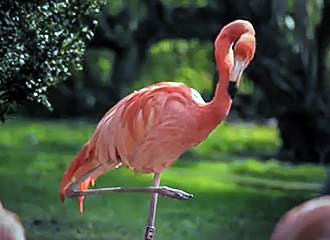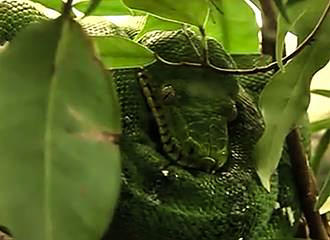Menagerie Zoo Historique de Paris in Jardin des Plantes
Opened back in the 1700s, the Menagerie is a zoo in the heart of Paris, which is located within the Jardin des Plantes and has approximately 1800 different animals that includes mammals, birds, amphibians, insects, snakes, crocodiles, turtles and much more.
Menagerie Zoo Historique de Paris history
A botanical garden was first laid out in Paris in the early part of the 1600s, which was during the reign of King Louis XIII by his physician, and becoming known as The Jardin des Plantes, this expanded through the decades to incorporate more and more different species of plants, especially those that had medicinal aspects.
Becoming a public garden as well, this was greatly expanded during the 1700s and a maze, or labyrinth, was incorporated by the curator Comte de Buffon, and then in the latter part of the 1700s the Royal Menagerie was moved from the gardens of the Chateau de Versailles and was officially opened at the Jardin des Plantes in 1794.
During the early part of the 1800s buildings such as the bear pits and the rotunda were added between the years of 1802 and 1812, then a few decades later the reptile hall and aviary were added and all of these have now been classified as historical Paris monuments.
In fact, the whole garden is classed as an historical Paris landmark along with its labyrinth and the impressive buildings that are home to the Natural History Museum, the Grand Gallery of Evolution and the Galleries of Anatomy and Palaeontology.
There are also the art deco styled buildings that were added to the Menagerie Zoo Historique de Paris between World War I and World War II, including a Vivarium in 1926 and one for big cats in 1937, which was designed by Rene Berger who was also the architect of the Grand Serres and the Grande Galerie de l'Evolution.
Yet more recently, the Menagerie Zoo Historique de Paris has gone through renovations and changes made such as in 2003 when the bear pits were transformed to also receive red pandas and binterongs, also known as bearcats, in 2013 the desert aviary was added, and as of 2015 the reptile gallery saw major renovations.
About the Menagerie Zoo Historique de Paris
There are around 80 members of staff including trainers and veterinarians who look after the animals at the Menagerie Zoo Historique de Paris and maintenance of their surroundings, to provide the best possible habitat and conditions in captivity.
The Menagerie has expanded substantially over the years, and there are now around 1800 different animals you can discover, with animals from different continents and endangered species, all within easy reach in the heart of the city.
Also being one of the oldest zoos in the world, you will be able to see well over 300 different birds, around 200 turtles, crocodiles, lizards and snakes, plus there are about 140 amphibians, over 200 mammals and around 900 insects, crustaceans and spiders.
The Menagerie Zoo Historique de Paris is dedicated to small and medium sized animals, so you can get to see endangered species such as cranes, snow leopards, orang-utans, pandas, white neck turtles, etc.
There are many other animals such as the Przewalski horses that were thought to be extinct, the Arabian oryx that became extinct in the wild in the 1980s and the Visayas boar that is endangered, with the Menagerie Zoo Historique de Paris working alongside other zoos for a breeding program to save them from extinction. In fact, among the success stories for re-introducing animals back to the wild from the breeding program include the Golden Lion Tamarin to Brazil and the Araban Oryx to the Arabian Peninsula.
So as you can tell, this is a zoo in the heart of Paris is not to be missed, but it also plays a very important role in the protection of endangered animals, along with being involved in numerous programmes for stopping their extinction, re-introducing different animals back to the wild in their true habitats, along with the preservation of habitats that have declined to drastic levels.
You will also find that during Springtime every year there is a baby boom of births at the Menagerie Zoo Historique de Paris, which have included red pandas, clouded leopards, Przewalski horses, many different kinds of birds, reptiles, etc.
Visiting the Menagerie Zoo Historique de Paris
You will find that the Menagerie Zoo Historique de Paris is located within the Jardin des Plantes on the left bank of the River Seine in the 5th Arrondissement of Paris, and is open daily from 9am through to 6pm from around mid March.
The full price of entry is €13 as of 2020, however a discounted rate of only €10 is available for children between the ages of 4 and 16, and it is free for children under the age of 4. Upon valid proof, it is also free to the disabled, plus you may be pleased to know that there are toilets and even picnic tables available so that you can fully enjoy a family day out.
Yet we would like to point out that last entry is a minimum of 45 minutes prior to this Paris zoo closing for the day, but if you have a full price ticket, you can also get a discount to other Paris tourist attractions in the Jardin des Plantes, which is valid for around a month after your visit.
In addition to this, children under the age of 13 must be accompanied by an adult for safety reasons and an adult can not be responsible for more than 6 children, therefore if you are arranging something like a birthday outing, then you would need to ensure there are a suitable number of adults present.
There are also annual passes available, meaning that you can visit the Menagerie Zoo Historique de Paris in Jardin des Plantes as many times as you like throughout a year, which are a cost of €35 for the full rate adult price as of 2020.
Access to the Menagerie Zoo Historique de Paris
Now as for getting to the Menagerie Zoo Historique de Paris, there are numerous different means of Paris public transport that will get you close by, including the Batobus water bus shuttle service that has a docking station on the River Seine, or alternatively, if you prefer your own schedule and are fit enough, then the Velib self service bike system could be your answer, as there is a Velib station just outside the Jardin des Plantes.
The Gare d’Austerlitz train station is also within easy walking distance and serves Intercities and TER trains plus the RER trains via line C, along with being a Metro station for lines 5 and 10.
Yet there is the Metro station called the Censier - Daubenton stop serving line 7, although the closest to this historical Menagerie Zoo is the Jussieu stop serving Lines 7 and 10. But you could also utilise the Paris buses via bus Lines 24, 57, 61, 63, 67, 89, 91 and 215, along with the Noctilien Night Bus Service via Lines N01, N02 and N31, and many of these bus line stop virtually outside.



